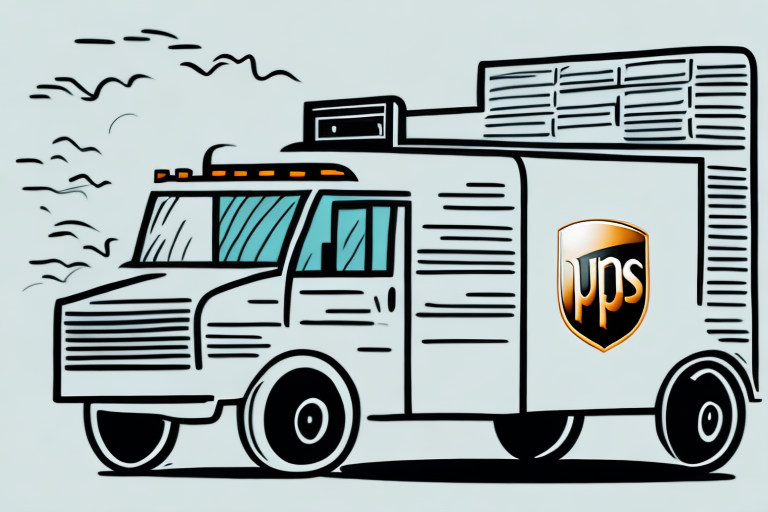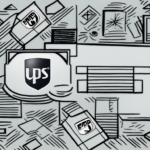Understanding UPS Return Shipping Rates
UPS (United Parcel Service) is one of the world's largest shipping companies, offering both domestic and international shipping services. For businesses that handle frequent returns, understanding UPS return shipping rates is essential. This guide explores the factors that influence these rates, methods to calculate them, and strategies to minimize associated costs.
Importance of Return Shipping Rates
Return shipping rates significantly impact the profitability and customer satisfaction of any e-commerce business. High return shipping costs can erode profit margins, while affordable and hassle-free return options can enhance customer loyalty and encourage repeat purchases.
Offering free returns, for instance, has been shown to increase purchase likelihood and build customer trust. According to a study by National Retail Federation, 75% of consumers are more likely to shop with retailers that offer free return shipping.
Additionally, considering the environmental impact of return shipments is becoming increasingly important. Implementing eco-friendly return options can reduce the carbon footprint and appeal to environmentally conscious consumers.
Factors Influencing UPS Return Shipping Costs
Distance and Location
The distance a package must travel directly affects the shipping cost. Longer distances typically result in higher rates. Shipping to remote or hard-to-reach areas may also incur additional surcharges.
Package Weight and Dimensions
Heavier and larger packages generally cost more to ship. UPS categorizes shipments based on weight and size to determine the appropriate rates. Optimizing package dimensions can lead to significant savings.
Shipping Speed
Expedited shipping options, such as overnight or two-day delivery, are more expensive than standard ground shipping. Businesses must balance the need for speed with cost considerations.
Packaging and Handling Requirements
Fragile or oversized items that require special handling will incur additional fees. Proper packaging not only protects the product but can also minimize extra costs associated with handling.
Package Value and Insurance
High-value items may require additional insurance coverage, increasing the overall shipping cost. Assessing the necessity of insurance based on the item's value and risk can help manage expenses.
Types of UPS Return Shipping Services
Return Label Basis
With the return label basis, customers use a prepaid label provided by the business. This method is cost-effective and suitable for standard returns.
Call Tag Basis
The call tag basis involves UPS picking up the package directly from the customer's location and generating a return label. This service offers added convenience but is typically more expensive than the return label basis.
Strategies to Minimize UPS Return Shipping Costs
Offer Free Returns
Providing free return shipping can enhance customer satisfaction and encourage repeat business. While it may increase upfront costs, the long-term benefits often outweigh the expenses.
Optimize Packaging
Using lightweight and appropriately sized packaging materials can significantly reduce shipping costs. Consider materials that offer protection without adding unnecessary weight.
Negotiate Rates with UPS
Businesses that ship large volumes can negotiate discounted rates with UPS. Establishing a partnership can lead to tailored solutions that meet specific business needs.
Leverage Technology and Tools
Utilize UPS's online tools and shipping software to manage return shipments efficiently. These tools can help track packages, compare shipping options, and optimize routes for cost-effectiveness.
Centralize Return Processing
Routing returns to a centralized location can reduce shipping distances and associated costs. This approach also streamlines the return process, making it more manageable.
Comparing UPS Return Shipping with Other Carriers
When selecting a return shipping carrier, it's essential to compare UPS with other major carriers like FedEx, USPS, and DHL. Factors to consider include shipping rates, reliability, delivery speed, and available services.
For example, USPS may offer more cost-effective rates for smaller packages, while FedEx could provide superior expedited services. Evaluating these options ensures that businesses choose the most suitable carrier for their return shipping needs.
Managing High-Volume Returns
Businesses experiencing high volumes of returns can implement several strategies to manage and reduce associated costs:
- Negotiate Customized Rates: Engage with UPS to establish volume-based discounts tailored to your shipping needs.
- Automate the Return Process: Use shipping software to streamline returns, reducing manual errors and improving efficiency.
- Implement Clear Return Policies: Transparent and straightforward return policies can reduce processing time and costs.
- Analyze Return Data: Understanding the reasons behind returns can help mitigate future costs by addressing underlying issues.
Future Trends and Technologies in UPS Return Shipping
The future of UPS return shipping is likely to be shaped by technological advancements and evolving consumer expectations. Innovations such as drone deliveries and autonomous vehicles aim to reduce shipping costs and enhance delivery efficiency.
Additionally, UPS is investing in sustainable shipping practices, including the use of electric vehicles and optimized routing to minimize environmental impact. These initiatives align with the growing consumer demand for eco-friendly shipping options.
Conclusion
Understanding UPS return shipping rates is crucial for e-commerce businesses aiming to maintain profitability and customer satisfaction. By considering factors such as distance, package weight, and shipping speed, businesses can accurately calculate return shipping costs, negotiate better rates, and implement cost-effective return shipping strategies. With ongoing technological advancements, businesses can anticipate more efficient and sustainable return shipping solutions in the future.




















